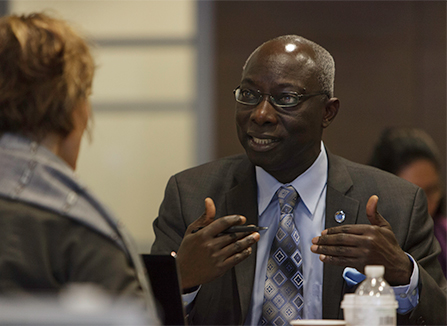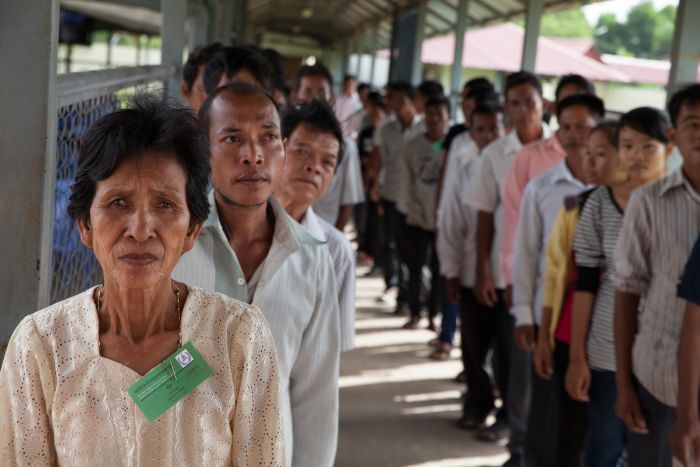Countering Dangerous Speech, Protecting Free Speech: Practical Strategies to Prevent Genocide
February 20–21, 2014
In February 2014, the Center for the Prevention of Genocide convened a diverse and dynamic group of three dozen international experts from the fields of government, technology, business, civil society, journalism, and academia to address two basic questions:
- How can we detect where hate speech is occurring that threatens to incite mass violence?
- How can we prevent messages of violent hate from reaching and influencing their intended audience without restricting free speech?
The seminar built upon the findings of the 2009 Sudikoff Seminar, “Speech, Power, Violence,” which identified the need to more clearly define the types of hate speech associated with collective violence and the potential for using this understanding to predict and prevent future genocides.
The Executive Summary (PDF) outlines key findings from the seminar.
Background
Genocide is often preceded and accompanied by widespread hate speech. The leaders who planned mass killings in the Holocaust, Rwanda, and Srebrenica disseminated ideologies of hatred to spur their followers to act, cow bystanders into passivity, and justify their crimes.
It is becoming increasingly clear that certain types of hate speech can serve as both a warning sign and a catalyst of genocide and mass atrocities. Understanding how speech acquires the power to incite group-targeted mass violence, identifying where and when such inflammatory speech is occurring, and developing ways to counter such speech can all help to prevent these crimes.
For two decades, discussion of how to combat incitement to genocide has centered on criminalization and punishment. This approach has had a limited deterrent effect, and in some states incitement laws have been misused to silence dissent. Suppressing free speech carries its own risk for group-targeted mass violence, for messages of hate have greatest impact where they lack competition.
Recently, experts addressing hate speech and incitement to mass violence have made significant progress in developing new approaches that go beyond criminal law. Scholars and civil society have:
- Defined a category of hate speech called “dangerous speech”—a form of hate speech that has the power to catalyze group-targeted mass violence—and outlined how to identify such speech.
- Defined, and in some cases experimented with, new technologies to monitor and track hate speech and instances of incitement as a way to identify populations at risk.
- Outlined broad policy approaches to combat dangerous speech without restricting free speech and begun field testing innovative projects.
With these milestones in hand, seminar participants sought to move from a discussion about types of policy responses to refining and expanding a toolkit of specific and practical policies and approaches that can combat incitement to genocide while also preserving the right to free expression.
They also reviewed and assessed the latest efforts to monitor and counter dangerous speech, analyzed specific situations in which dangerous speech is potentially occurring, and identified needs for future research and projects.
Selected Reading
- “Countering Dangerous Speech: New Ideas for Genocide Prevention” (PDF) by Susan Benesch
- “Countering Dangerous Speech to Prevent Mass Violence during Kenya’s 2013 Elections” (PDF) by Susan Benesch
- Technology Scan (PDF) by Jill Savitt
This seminar was made possible by the generous support of the Sudikoff Family Foundation, which funds the Museum’s Sudikoff Annual Interdisciplinary Seminar on Genocide Prevention.


